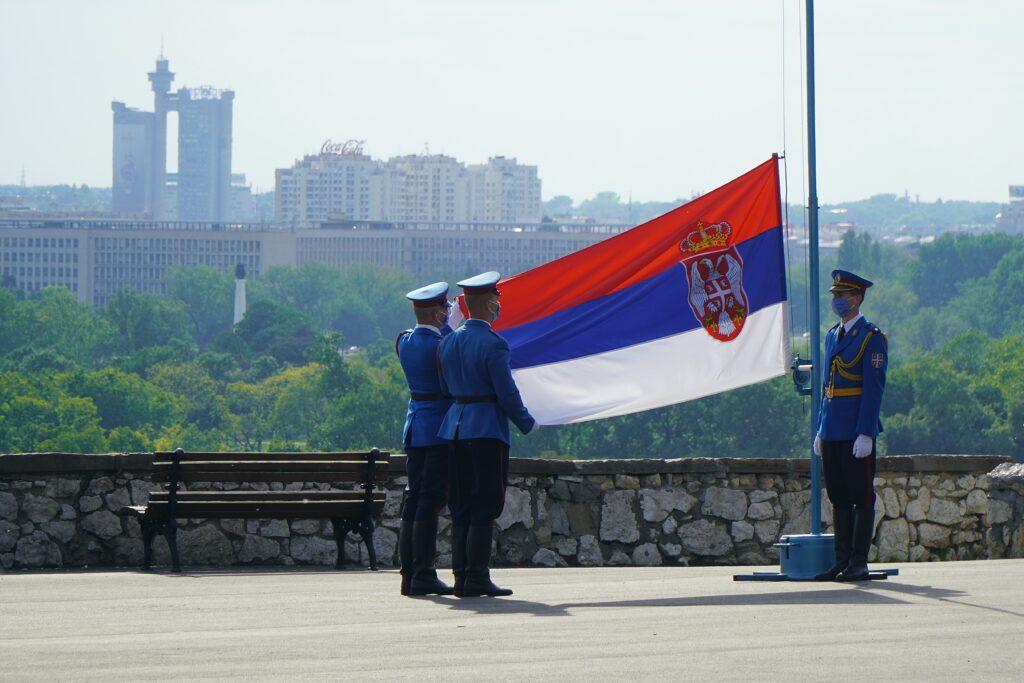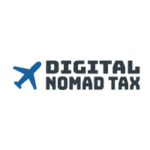In this article we’ll take a deep dive into Serbia tax residency: how it can benefit you and how to obtain it.
Need help optimizing your taxes as a digital nomad or remote worker? Contact me!
Overview of Tax Residency in Serbia
- 10% withholding tax on salaries
- Annual top-up of 10% or 15% if you surpass certain income thresholds
- Specific calculations for income taxes for freelancers
- High social contributions both for employees and freelancers
- Corporate income tax of 15%
- Obtain tax residency via days-test or center of vital interest

Taxes in Serbia
Before getting Serbia tax residency you of course want to ensure you understand the different taxes that can apply to you.
Personal Income Tax
In Serbia you will need to declare and pay taxes on your worldwide income.
The standard personal income tax rate for employment income in Serbia is 10%. These taxes are withheld by the employer upon payout.
Freelancers will have to make prepayments themselves.
Nevertheless, on top of this withholding tax you will have to pay a supplementary tax upon filing your tax return if your income surpasses a certain threshold.
No additional tax is due if your income is lower than three times the average salary for employees. The average salary currently amounts to approximately SRD 1.625.000 or EUR 14.000.
Accordingly, the threshold for the tax markup is SRD 4.875.000 or EUR 42.000.
If you make more than this you’ll have to pay another 10% on tax on the income above this threshold. Consequently, your total tax burden will amount to 20% on income above the threshold.
If your annual income exceeds six times the average salary or approximately SRD 9.750.000 you’ll pay a 15% surtax on everything above this threshold. This could bring your total tax burden to 25% (1).
Investment income (e.g. dividends, interest and capital gains) is generally subject to a tax rate of 15%.
Self-Employed Flat-Rate for Freelancers
By default, freelancers will pay 10% tax calculated on their profit throughout the year. In order to calculate their profit they will have to keep books of their income and expenses.
Yet, freelancers can also choose to use a simplified regime for calculating their income taxes.
They have two options for calculating their taxes:
- Model A: 20% income tax on their quarterly revenue minus a lump sum for expenses of SRD 96.000 (approximately EUR 825).
- Model B: 10% income tax on their quarterly revenue minus a lump sum for expenses of SRD 57.900 (approximately EUR 500) plus 34% of quarterly gross revenue.
The first method is mostly interesting for freelancers with a low income, while the second options benefits freelancers with higher income.
Nevertheless, also freelancers have to file a tax return and pay the annual supplementary tax if they exceed the threshold of three times the average annual salary.
Social Contributions
If you work as an employee in Serbia, both you and your employer will have to pay for social security.
Employer:
- Disability and pension: 10%
- Public healthcare: 5,15%
- Unemployment insurance: 0%
Employee:
- Disability and pension: 14%
- Public healthcare: 5,15%
- Unemployment insurance: 0,75%
The maximum base for contributions is five times the average monthly salary or around RSD 656.00 (EUR 5.600).
Yet, also a minimum contributions applies. This is calculated on a salary of RSD 46.000 (EUR 400).
Freelancers have to pay all these contributions themselves and the numbers look like this:
- Disability and pension: 24%
- Public healthcare: 10,30%
- Unemployment insurance: 0%
For disability and pensions the minimum contribution per quarter is RSD 23.160. Yet, the minimum doesn’t apply for freelancers under Model A.
For public healthcare the minimum is RSD 4.200 per quarter.
Unfortunately, no maximum contributions apply to freelancers.
Corporate Income tax
The corporate income tax for companies in Serbia is 15%.
Yet, when working with a company, you should also think about the tax on dividends if you plan to take money out in that way.
Requirements for Obtaining Tax Residency
Basically, there are two ways by which you can qualify to have Serbia tax residency.
If you decide to spend 183 or more days in Serbia during a twelve month period, Serbia will consider you a tax resident.
This days-test is quite easy to assess as you will just need to count the days you spend in the country.
Apart from the aforementioned days-test, Serbia has another way to qualify you as a tax resident.
They do this by assessing if you have your residence or your center of vital business and personal interests in the country.
This is not that straight forward and is assessed based on practical stuff as where you hold your bank accounts, own real estate and have your social life.
How to Establish Tax Residency in Serbia
Let’s have a closer look at the different steps to establish tax residency in Serbia.
Get Residency Permit
The first step in securing your Serbia tax residency is to make sure you get your hands on a residency permit.
The residency permit will allow you live in Serbia and enables you to meet the criteria for tax residency.
Meet Tax Residency Criteria
If you want to establish Serbia tax residency you will first need to make sure you will meet one of the criteria to qualify as a tax resident:
- spend 183 days ore more in Serbia during a twelve month period
- Have your centre of vital interests in Serbia
Tax Office Registration & Compliance
Next you can register yourself with the Serbian tax authorities and request a tax number.
Now you are ready to file your taxes in Serbia.
Subsequently, you can also apply for a certificate of tax residency (POR-1) which can help you to avoid double taxation in other countries.
My Tax Perspective on Being a Digital Nomad with Tax Residency in Serbia
Serbia wouldn’t be my first choice to set up tax residency as a digital nomad.
If you don’t have a high income you can limit your tax burden to 10% or even a bit less with the quarterly tax for freelancers. Yet, once your income surpasses around EUR 42.000, your tax rate will jump to 20%.
Moreover, you’ll have to pay social contributions on top of this. These social contributions mostly ruin the potentially good deal you can get for income taxes.

How is Serbia for Digital Nomads?
Serbia is an interesting destination for digital nomad because of the following reasons:
- Affordability: like many Balkan countries, Serbia offers a more affordable cost of living than Western Europe.
- Internet & mobile data: both landline internet as well as mobile date is available at high speeds.
- History & culture: you can visit many of the historic cities and indulge yourself in the local culture.
- Travel hub: although it’s not so well internationally connected, it’s centrally located to visit many interesting surrounding countries.
- Non-EU/Schengen: for non-EU/EEA/Swiss citizens it can be interesting that Serbia is not part of the European Union and the Schengen Area. You can visit Serbia without it effecting the amount of days you can still spend in the Schengen Area.
- Growing community: for all these reasons, there are growing digital nomad communities in cities like Belgrade and Novi Sad.
Are You a Digital Nomad? Work With Me
Are you considering Serbia as your base as a digital nomad?
Determining tax residency is only one part of the picture—your international situation, double tax treaties, and cross-border obligations also play a crucial role.
I assist digital nomads with international tax planning, ensuring compliance while helping you optimize your global tax position.
If you would like tailored advice, you are welcome to get in touch.
